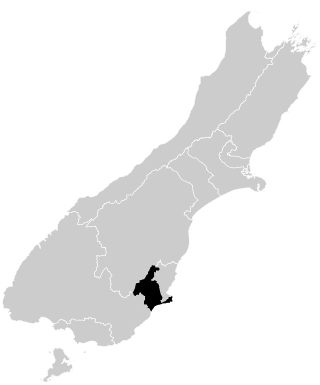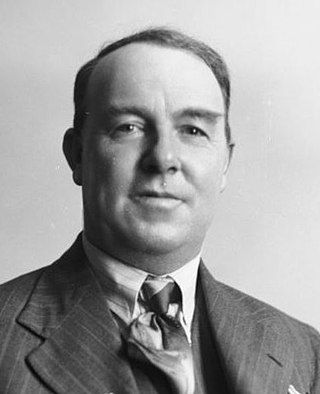Related Research Articles
Ashburton was a New Zealand electorate, first created in 1881 and centred on the South Island town of Ashburton.

Dunedin South is a former New Zealand parliamentary electorate. It first existed from 1881 to 1890, and subsequently from 1905 to 1946. In 1996, the electorate was re-established for the introduction of MMP, before being abolished in 2020.
Taranaki was a New Zealand parliamentary electorate that existed for three periods between 1881 and 1996. It was represented by nine Members of Parliament.
Bay of Islands is a former New Zealand parliamentary electorate. It existed during various periods between 1853 and 1993. It was thus one of the original 24 electoral districts, and New Zealand's first ever MP was elected, although unopposed, in the Bay of Islands; Hugh Carleton thus liked to be called the Father of the House.
Sydenham was a New Zealand parliamentary electorate, from 1881 to 1890 and again from 1946 to 1996. It had notable politicians representing it like Mabel Howard, Norman Kirk and Jim Anderton.
Waitemata was a New Zealand parliamentary electorate, from 1871 to 1946, and then from 1954 to 1978. It was represented by 18 members of parliament.
Awarua was a New Zealand parliamentary electorate from 1881 to 1996.
Christchurch North is a former New Zealand parliamentary electorate. The electorate comprised the northern half of what is now considered the Christchurch Central City.
Dunedin West was a New Zealand parliamentary electorate, in the city of Dunedin. It existed for three periods between 1881 and 1996 and was represented by seven Members of Parliament.
Wairau was a parliamentary electorate in the Marlborough Region of New Zealand. It was one of the initial 24 New Zealand electorates and existed from 1853 until its abolition in 1938, when it was succeeded by the Marlborough electorate. The electorate had 13 representatives during its existence. The 1861 election in the Wairau electorate was notable in that a later Premier, Frederick Weld, was unexpectedly and narrowly defeated by William Henry Eyes.
Waipawa was a parliamentary electorate in the Hawke's Bay Region of New Zealand, from 1881 to 1946.
Lincoln was a parliamentary electorate in the Canterbury region of New Zealand from 1881 to 1890. It was represented by two Members of Parliament.
Christchurch was a parliamentary electorate in Christchurch, New Zealand. It existed three times. Originally it was the Town of Christchurch from 1853 to 1860. From the 1860–1861 election to the 1871 election, it existed as City of Christchurch. It then existed from the 1875–1876 election until the 1881 election. The last period was from the 1890 election to the 1905 election. Since the 1946 election, a similarly named electorate called Christchurch Central has been in existence.
Stanmore was a parliamentary electorate in Christchurch, New Zealand, from 1881 to 1887. The electorate was represented by two Members of Parliament.
St Albans was a parliamentary electorate in Christchurch, New Zealand, from 1881 to 1890, then from 1946 to 1996.
Oamaru was a parliamentary electorate in the Otago region of New Zealand, during three periods between 1866 and 1978.

Melville Edwin Lyons, sometimes called Tiny, was briefly a Reform Party Member of Parliament in New Zealand until his election was declared void. A journalist by trade, he became involved in local politics in Christchurch after having served in WWI. He was Deputy Mayor of Christchurch for six years under mayor Ernest Andrews.
The 8th New Zealand Parliament was a term of the New Zealand Parliament.

The 1939 Christchurch South by-election held on 3 June was caused by the death of Ted Howard during the term of the 26th New Zealand Parliament. The by-election in the Christchurch South electorate was contested by Robert Macfarlane for Labour and Melville Lyons for National, with Macfarlane winning the election. At the time, Macfarlane was Mayor of Christchurch.

The 1943 Christchurch East by-election held on 6 February was caused by the death of Tim Armstrong during the term of the 26th New Zealand Parliament. The by-election in the Christchurch East electorate was contested by five candidates, including representatives from the Labour Party, the Labour breakaway party Democratic Labour Party and the National Party. The election was won by the Labour candidate, Mabel Howard, and started her long parliamentary career, which included her becoming the first female cabinet minister in 1947.
References
- ↑ McRobie 1989, pp. 43–48.
- ↑ "Canterbury Electorates". The Star (Christchurch) . No. 4158. 18 August 1881. p. 3. Retrieved 19 December 2013.
- ↑ "The General Election, 1884". National Library. 1884. p. 2. Retrieved 17 March 2012.
- ↑ "Christchurch South". The Star . No. 6034. 16 September 1887. p. 2. Retrieved 21 April 2012.
- ↑ "The General Election, 1887". National Library. 1887. p. 2. Retrieved 25 February 2012.
- ↑ "City By-Election". The Evening Post . Vol. CXXVII, no. 118. 22 May 1939. p. 11. Retrieved 14 November 2011.
- ↑ "Labour Party Nomination". The Evening Post . Vol. CXXVII, no. 102. 3 May 1939. p. 7. Retrieved 14 November 2011.
- ↑ McAloon, Jim. "Howard, Mabel Bowden 1894–1972". Dictionary of New Zealand Biography . Ministry for Culture and Heritage . Retrieved 15 November 2011.
- ↑ "Chairmen and mayors". Christchurch: Christchurch City Council. Archived from the original on 22 May 2010. Retrieved 15 November 2011.
- ↑ "Public Notices". The Press . Vol. LXXIX, no. 24077. 13 October 1943. p. 1. Retrieved 15 May 2017.
- ↑ "By-Election Result". Rodney and Otamatea Times, Waitemata and Kaipara Gazette. 7 June 1939. p. 5. Retrieved 14 November 2011.
- ↑ "Election Results". Auckland Star . Vol. LXII, no. 290. 8 December 1931. p. 3. Retrieved 1 November 2014.
- ↑ Skinner, W. A. G. (1929). The General Election, 1928. Government Printer. p. 2. Retrieved 17 February 2020.
- ↑ Hislop, J. (1915). The General Election, 1914. National Library. p. 20. Retrieved 25 April 2015.
- ↑ AtoJs 1908 election 1909, p. 18.
- ↑ The general election, 1905. p. 4. Retrieved 26 November 2015– via AtoJs.